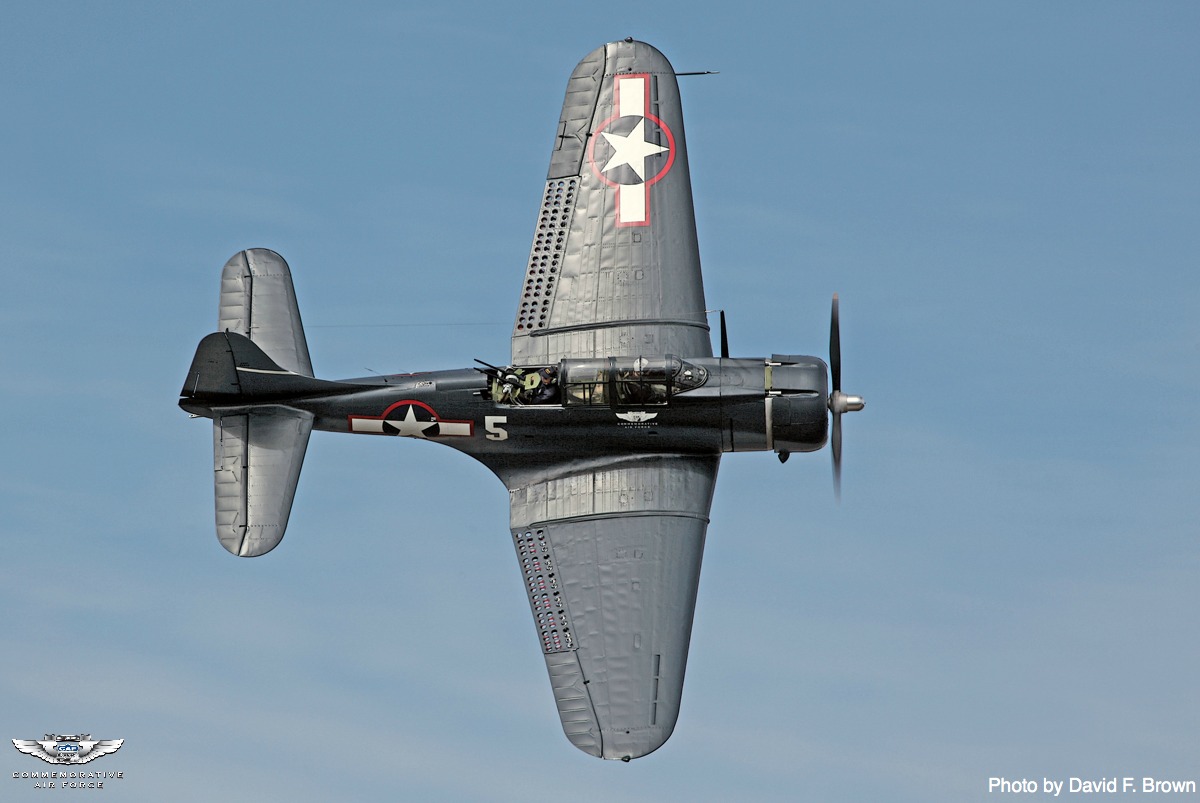
History
The Northrop Corporation first developed the SBD before World War II. It was first flown in July 1935, but considered obsolete by December 1941 when the Japanese attacked Pearl Harbor. Douglas Aircraft purchased the SBD contract and the SBD-1 was first delivered in late 1940. Over 5,000 aircraft were built and production of the carrier-based scout, dive and torpedo bomber ceased in July 1944.
Despite accusations that the aircraft was under-powered, vulnerable, lacking in range and exhausting to fly for any length of time, the “Dauntless” helped turn the tide of World War II at the Battle of Midway on June 4, 1942. The “Dauntless” sunk four major aircraft carriers of the Japanese Navy, ceasing Japanese expansion in the Pacific. The SBD also served with 20 U.S. Marine Corps Squadrons and many SBDs were retrofitted with Westinghouse ASB radar, the first to be used by the U.S. Navy.
Though considered obsolete on that “Day of Infamy” in the skies over Pearl Harbor, December 7, 1941, the SBD was the first American combat aircraft to shoot down a Japanese Zero fighter. It may have been slow, but it was deadly, as that Japanese pilot found out that day.
The SBD was the only U.S. Navy dive bomber to serve from the beginning of the World War II until the end. Considered the most destructive air weapon in the U.S. Navy arsenal, the SBD sank over 300,000 tons of enemy ships, a greater tonnage of Japanese shipping than any other Allied aircraft during the war! Eighteen were warships, including five aircraft carriers sunk in the battle of the Coral Sea and Midway. It earned the nickname “Slow, But Deadly!” After the war, the U.S. Marine Corps continued to use the SBD, and in the 1950s, the French Air Force used SBDs in its war in Indo-China.
